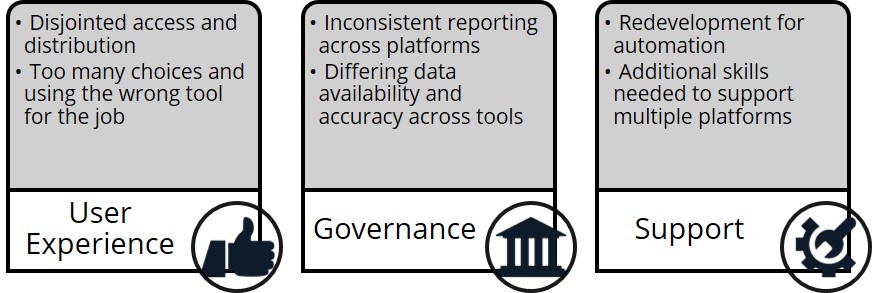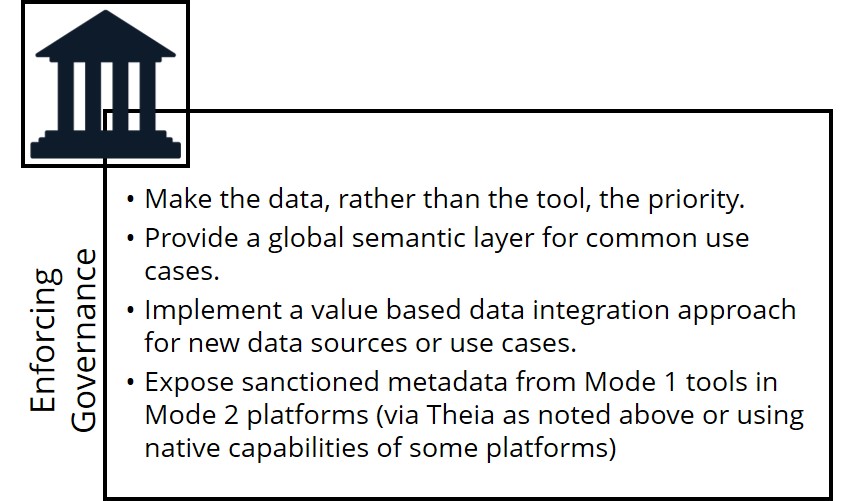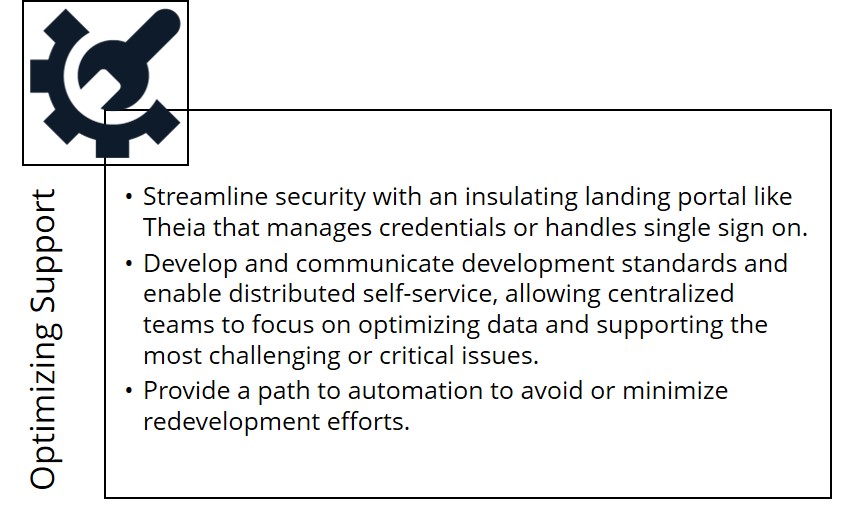A Marriage of Modes: Unifying Multi-Platform Analytics Ecosystems
One size does not fit all. Try as they might, there is not a single BI platform that can offer every capability that users require. With organizational complexity increasing, and the growing demand for self-service analytics, it has become commonplace, even recommended, for organizations to maintain multiple BI platforms to meet the needs of people in diverse roles with differing needs across the organization.
At the very least, your organization is likely to have a Mode 1 tool, like Cognos Analytics, for enterprise operational reporting distributed from a centralized platform, and a Mode 2 tool, like Tableau, for visual data discovery and self-service analytics. While standardization onto a single platform has historically been an objective of centralized BI teams – driven by the perception that one platform provides more efficiency and lower total cost of ownership – bringing in the right tools to satisfy the varying analytics needs of your users can actually be a more effective approach in the long run. Focusing on building content around the use case rather than within the context of a particular tool’s capabilities is the best way to maximize user adoption and true value of your analytics solutions.
But, every silver lining has a cloud (wait, that’s not how the saying goes). As we endeavor to provide an array of analytic capabilities through the availability of multiple tools, we face several significant challenges and risks.
Challenges and Risks

Solutions
Through our experience mitigating these challenges and risks for our clients and with the availability of exciting new products from the vendors we partner with, Ironside is able to offer some real world advice on how to bring unity to content and process management in multi-platform analytics ecosystems.
One example is Theia, a new product developed by our partner Motio. Theia is an information portal that brings together components from your various BI platforms together in one user interface, with integrated security and a single access point. With Theia, users can access and interact with reporting and analytic content from various platforms* as well as leverage metadata packages from Mode 1 tools like Cognos Analytics, Oracle Business Intelligence, and SAP Business Objects with Mode 2 platforms like Tableau, QlikView, and Power BI. This capability allows self-service users to take advantage of the strengths of the different platforms within a single process.
In addition to leveraging a solution like this to add an integrating layer between platforms in your environment, we have some other recommendations in line with the three areas of challenges noted above – User Experience, Governance, and Support.



Looking for a more comprehensive plan? Contact us for more information on our Bimodal Analytics Assessment, designed to help organizations enable business analysts to explore and experiment with data, find new insights and value and innovate for their organizations, while maintaining a governed, scalable data framework.
*For a full list of platforms that Theia can currently connect to, please reach out to us. Custom connectors can be created for most platforms if not currently built into the product.
About Ironside
Ironside was founded in 1999 as an enterprise data and analytics solution provider and system integrator. Our clients hire us to acquire, enrich and measure their data so they can make smarter, better decisions about their business. No matter your industry or specific business challenges, Ironside has the experience, perspective and agility to help transform your analytic environment.






